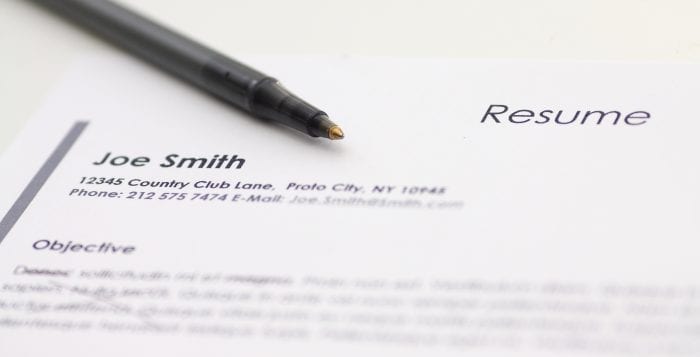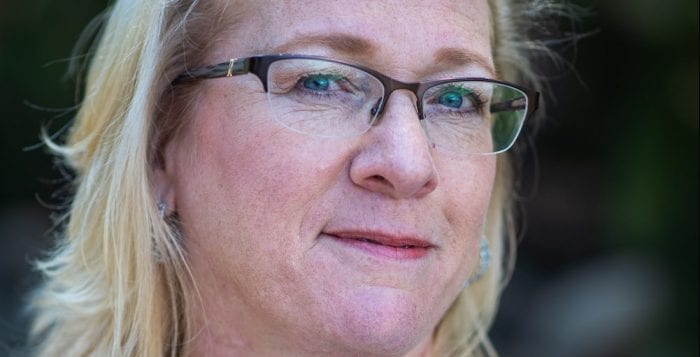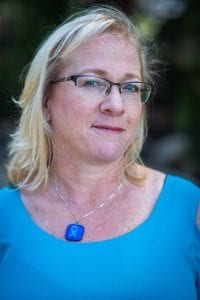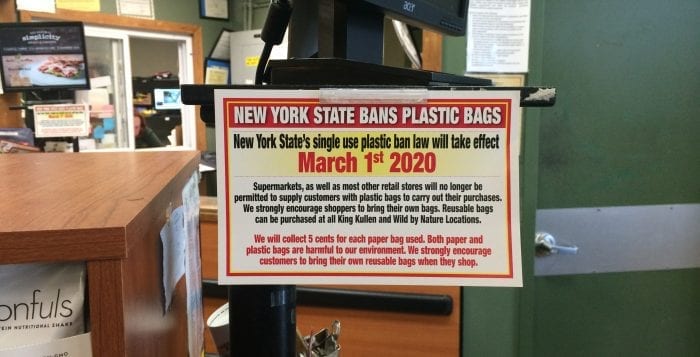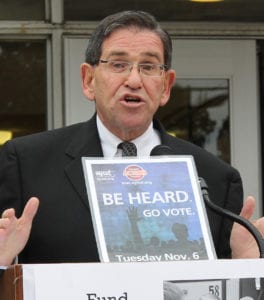A piece of legislation that would restrict employers from asking about criminal histories in job applications could be voted on by Suffolk lawmakers in the near future.
At a county Legislature meeting earlier this month, legislators said that they had reached a bipartisan agreement on “Ban the Box” legislation and plan to present the bill at a later date.
County Legislator Samuel Gonzalez (D-Brentwood) along with Legislators Susan Berland (D-Dix Hills) and Kevin McCaffrey (R-Lindenhurst) plan on making amendments on the bill.
“People makes mistakes in their lives, I’m sure each of you have made mistakes.”
— Melissa Bennett
More than 20 people came out in support of the bill at a Feb. 11 meeting. Those who spoke agreed that it would allow former convicts the ability to become better contributing members of a community while helping them rehabilitate and reacclimate into society.
“I would like applaud the Legislature for making progress in supporting fair hiring practices in Suffolk County — it’s about time,” said Serena Liguori, executive director of New Hour, a Long Island nonprofit organization advocacy group that supports women, mothers and children impacted by incarceration. “We have worked with more than a thousand women across the county who have convictions. Most of them need employment when they come home.”
The executive director of the nonprofit said she hopes a potential passage of the legislation could lead to making strides around other issues.
Besides employment, “many of the women we help talk about housing and the lack of it, [and] transportation,” Liguori said.
Melissa Bennett, Huntington resident, said she believed individuals deserved a second chance.
“People makes mistakes in their lives, I’m sure each of you have made mistakes,” she said. “We’re human, it happens. Without banning the box, you are essentially [putting people] in a box.”
Elizabeth Justesen, community outreach director of the Legal Aid Society of Suffolk County, also stressed the need to eliminate the application question.
“Last year this bill lost by one vote,” she said. “For those who came out here every month [to the Legislature] it was a blow. We sat in disbelief in the Legislature’s inability to vote on human dignity.”
The community outreach director pointed out that one in three people have a criminal record in the U.S. Other advocates of such legislation, such as New York Gov. Andrew Cuomo (D) have also made the claim in the past, though according to PolitiFact, a fact-checking website, the FBI considers anyone who has been arrested on a felony to have a criminal record, even without a conviction. Effectively, one in three adults in the U.S. have a criminal record, but less have actually been convicted.
Though Justesen said with Suffolk County’s numbers of people on parole, people with convictions have it harder than it needs to be.
“In Suffolk County … with the largest parole population in the state, how can we expect them to get up on their feet and reintegrate to our communities if they cannot work,” Justesen said. “The time has come to do what is right and give people the chance to interview.”
Supporters have contended the ban would give applicants a chance to explain their crimes, in turn increasing their chance of getting hired, reducing crime and the number of repeat offenders being sent back to jail. More than 150 municipalities and 33 states in the U.S. have implemented “Ban the Box” laws.
Gonzalez spoke on the future of the legislation.
“We have been fighting the fight on this bill for a very long time, and we have been continuing to come together to iron out our differences,” he said. “We all felt that we needed to get this thing put in. … I think we are headed in the right direction on this issue.”
Local business owners are concerned about what the legislation could mean for them. The Suffolk County Alliance of Chambers encouraged members to voice their opinions on the issue.
“It is imperative that you know what your elected officials are voting on and have a chance to share your concerns before additional regulations are forced on you which ultimately might make it harder to operate a business here in Suffolk County and New York state,” the organization said in an email.
Last year, county legislators voted 9-8 against the measure. Lawmakers were concerned about putting too much onus on the employers. The previous version of the bill required employers to wait until after an initial interview to inquire about an applicant’s arrest or conviction record, and disclose to applicants the reason why they were not hired.
At the time, Berland did not support some of the requirements. The legislator said she didn’t think people who have a criminal record should get more benefits than others, noting that people with no criminal records do not learn why they were passed over for a job.

